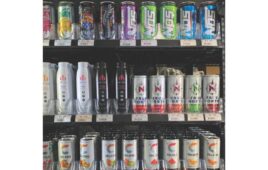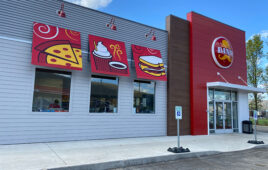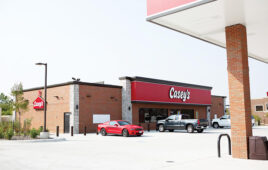Thoughtful planning and established relationships help smooth the way for angst-free negotiating.
By Pat Pape, Contributing Editor
No matter their size, all convenience store chains have contracts with numerous vendors and service providers, and each contract must be re-negotiated at some point.
Preparing for those negotiations several months in advance is an important first step in ensuring the goods and services that will keep your stores running smoothly.
When contract negotiations with a broadline provider loomed this year for 28 Fast Break convenience stores—part of Ed Staub & Sons Petroleum—leaders at the Klamath Falls, Ore.-based chain began planning a full six months ahead.
“Jeff (Chase, director of operations) and I sat down and made a ‘best outcome’ list,” said Michael Cordonnier, category manager/buyer and marketing manager for Fast Break. “And we did everything we could to achieve those goals. That’s literally the time when they’re super focused on getting you to sign that agreement. Don’t be afraid to get out your red pen and line through items on the contract that you don’t like. It’s kind of a boiler-plate agreement. I’m sure they come to the table with a list as well.”
When Chase and Cordonnier attend an industry event, they focus on gathering pertinent information on potential suppliers.
“Our meetings aren’t 15 minutes done and gone. Our meetings may be three hours,” said Chase. “We talk about what’s going on in the industry, what they can do, what they have, what they are doing with their families this weekend. We build on that partnership. They give us a lot of information. We’re there before the show opens and stay until it closes. We want to learn everything we can.”
Ryan Krebs, director of foodservice for Rutter’s, is responsible for agreements that get the necessary food and supplies to the York, Pa.-based chain’s 70-plus locations. Prudent supply-related planning is vital to its
everyday retail operations.
“Give yourself a significant amount of time if you are matching up other distributors to ensure that you’ve vetted what everyone has,” said Krebs. “Even if things with your distributors are going well, bringing in other competition is the right thing to do to keep your present distributors honest. You may not know how much someone else wants your business, and they may have benefits associated with their program that you didn’t even know existed. Things can be surprising in a positive way.”
BUILDING RELATIONSHIPS
“While we’re getting to know them, we’re thinking ‘is this somebody we want to do business with for the rest of our lives,’” said Cordonnier. “When suppliers get a chance to talk about their product and what it’s doing and then talk about their competition’s product, we often learn something that can affect our next contract in a huge way.”
Before Fast Break selects a new supplier, they meet the leadership team, “the warehouse guys” and, if possible, the owners. “Everyone is important on every level,” said Chase.
Thanks to an established partner relationship, the chain recently negotiated a vendor rebate and arranged for it to be donated to the local Smart Reader program, which provides free books to third-graders.
“At the end of the day if all we’re left with is the fact that we’ve maximized our margin, then we’ve failed,” said Chase. “But if we can maximize our margin and do tremendous things for our community, that’s what I want to do.”
ATTRACTING VENDORS
Retailers that offer benefits beyond bottom-line profits are especially attractive to vendors. At Fast Break, the company’s good reputation has served it well.
“If you have a relationship with a broadline, and you aren’t doing everything you can to fill their trucks and drive down the cost per mile, and you aren’t telling them that every time you see them, you’re missing out on a huge negotiation point. Cost per mile is everything in distribution,” Cordonnier said.
Rutter’s store employees are trained to be friendly and to handle deliveries in a systematic manner.
“Our stores don’t often see manufacturers, but they do see the delivery guys,” Krebs said. “We have a very structured approach to accepting products—what we do, how and when we take the temperatures and where the products go. At the same time, we have expectations of our stores too—that they’ll get to the delivery person as soon as possible because that person has a job to do and has to be out of the store at a certain time.”
SWITCH HITTING
In February, more than two-thirds of the 900 KFC outlets in Britain were forced to shut their doors after they ran out of chicken. It’s because the Colonel’s new delivery partner had trouble getting product to the restaurants. Eventually, the problem was resolved, but after extensive negative publicity. In the end, KFC reconnected with its former chicken delivery service.
“There are always struggles and learnings to go through if you switch distributors, especially in the first couple of months,” said Krebs, noting that most major distribution companies have set timelines for preparing to take over a new account.
“They work backward just like you would if you were building a new store,” Krebs continued. “They have certain teams that handle specific responsibilities and timetables that tell them how long it will take to hire drivers, have them trained and set up logistics. It’s a ton of work, but as long as everyone hits those deadlines, you’ll have a semi-seamless transition.”
Once the dust settles, “it’s business as usual. It’s just a different truck on your lot,” Krebs added. “There is additional work to be done if you’re setting up a price book or inventory sheets with different costs on them. But you just adjust and make it a priority.”
Cordonnier believes that “switching broadlines is more painful than working through any problems you have [with your existing supplier]. A broadline is an anchor for your stores, and that relationship cannot be fickle. It should be ‘how long can we make this relationship last?’ Distributors all have the same issues: it’s weather, late trucks, flat tires, pickers or the Christmas tree season. If one does better on service, their costs are probably higher.”
In rural, less-populated areas where Fast Break operates, the company has the choice of two, maybe three, broadlines. If the company has issues with service, management prefers to target problems and work with the distributor to resolve them rather than immediately seeking a new provider.
“That might not be best in every case, but where you have fewer options like we do, you can’t be knee-jerk and think the grass is greener all the time,” Chase said. “You can only do that a few times, because eventually, they won’t care about your business.”
Krebs agreed.
“If every two years you go from one distributor to the next, maybe you need to look at your own process and wonder ‘why do I keep picking the wrong guys,’” he said. “Rutter’s goal is to be in business with partners for a long time. Once they understand our business, understand our growth and know where we’re going, it should be a continued partnership that grows for everybody.”




